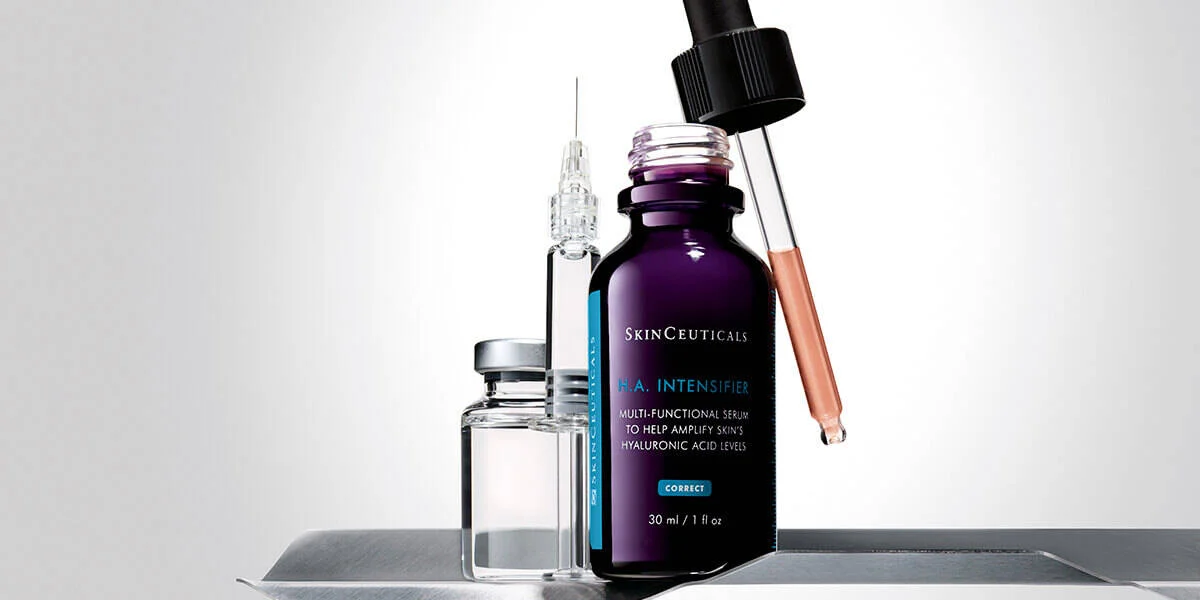Hyaluronic acid fillers have transformed the beauty industry since their introduction in the early 2000s. These popular cosmetic treatments offer numerous benefits, making them a go-to option for many seeking youthful, plump skin. Hyaluronic acid naturally occurs in our bodies, providing hydration and elasticity, and is also used in cosmetic ha filler injections, dermal fillers, skin filler, and ha filler treatments.
Using these fillers can enhance facial features, smooth out wrinkles, and restore volume lost with age. They are versatile and can be applied to various areas, including lips, cheeks, and under the eyes. With minimal downtime and impressive results, it’s no wonder why so many people are turning to hyaluronic acid fillers for a refreshed look. Understanding the benefits and uses of dermal fillers and hyaluronic acid filler can help you make informed choices about your beauty routine.
Key Takeaways
-
Hyaluronic acid fillers can greatly improve skin hydration and elasticity, making them a popular choice for enhancing skin health.
-
These fillers are commonly used in cosmetic treatments to reduce wrinkles, add volume, and create a more youthful appearance.
-
Understanding the filler procedure is crucial; it involves consultation, preparation, and a quick injection process that can yield immediate results.
-
Proper preparation before your filler session can enhance your experience and results; consider discussing any medications or allergies with your provider.
-
After receiving fillers, follow post-procedure care tips to minimize swelling and ensure optimal healing for the best results.
-
Always weigh potential risks and safety considerations when opting for hyaluronic acid fillers to make informed choices about your skin treatment.
Understanding Hyaluronic Acid Fillers
Definition
Hyaluronic acid fillers are non-surgical cosmetic treatments. They restore facial volume and smooth out wrinkles. These fillers provide a quick solution for those seeking a refreshed appearance without going under the knife. Many people choose hyaluronic acid dermal fillers for their effectiveness and minimal downtime.
Composition
Hyaluronic acid is a naturally occurring substance in the body. It plays a crucial role in retaining moisture. The body produces hyaluronic acid molecules that help keep skin hydrated and plump. As we age, our natural levels decrease. This reduction leads to dryness and loss of volume in the skin, necessitating dermal filler.
Hyaluronic acid gel fillers consist of hyaluronic acid particles suspended in a gel-like substance. This composition allows for easy injection of dermal filler into various facial areas. The gel provides immediate volume and hydration upon injection.
Versatility
Hyaluronic acid fillers are versatile. They can treat several areas of the face effectively. Common treatment areas include:
-
Lips
-
Cheeks
-
Under-eye hollows
Injections can enhance lip fullness, giving them a more youthful look. For cheeks, these fillers add volume and contour, creating a more defined appearance. Under-eye hollows can also be treated with hyaluronic acid gel injections, reducing the appearance of dark circles and puffiness.
Procedure
The procedure for hyaluronic acid filler injections is straightforward. A healthcare professional will assess the areas needing treatment. They will then apply a topical anesthetic to minimize discomfort during the injection process. Using a fine needle, they inject the filler into targeted areas.
Results are often visible immediately after treatment. The effects can last from six months to over a year, depending on the specific product used and individual factors.
Safety
Hyaluronic acid injections are generally considered safe. Side effects may include swelling, bruising, or redness at the injection site. These symptoms typically resolve within a few days.
Patients should consult with qualified professionals before undergoing treatment. This ensures that they receive appropriate care tailored to their needs.
Key Benefits for Skin Health
Hydration Boost
Hyaluronic acid fillers have a remarkable ability to hydrate the skin. They attract and hold water, enhancing moisture levels in the skin. This hydration results in a plumper appearance. When skin cells retain more water, they look fuller and healthier.
The immediate results from these fillers are often noticeable right after treatment. Many people see a visible improvement in their skin’s texture and tone. Fine lines can diminish, giving the face a smoother look.
Collagen Production
Fillers also play a role in stimulating collagen production. Collagen is essential for maintaining skin elasticity and firmness. Over time, as we age, collagen levels decrease. This decline leads to sagging skin and wrinkles.
By using hyaluronic acid fillers, individuals can boost their body’s natural collagen production. This enhancement doesn’t just provide short-term benefits; it promotes long-lasting improvements in skin health.

Temporary Nature
The temporary nature of hyaluronic acid fillers offers unique advantages. Since they are not permanent, adjustments can be made based on individual preferences. People can choose how much volume they want at any given time.
This flexibility allows for customized treatments. For example, if someone desires more fullness in their cheeks or lips, they can easily request additional filler. Conversely, if less volume is preferred later on, the effects will gradually fade over time.
Longevity of Results
While results vary from person to person, many experience longevity with hyaluronic acid fillers. Depending on the specific product used and individual factors, effects may last from six months to two years. Regular maintenance treatments can extend these effects even further.
This longevity makes fillers a worthwhile investment for those seeking to enhance their appearance without committing to permanent changes.
Weight Consideration
The weight of hyaluronic acid fillers also plays a role in their effectiveness. Different formulations have varying weights that influence how they behave under the skin. Heavier fillers provide more structure and support for deeper wrinkles, while lighter ones are ideal for surface-level hydration.
Understanding these differences helps individuals select the right type of filler for their needs. Consultation with a qualified professional ensures the best choice is made based on individual skin conditions and desired outcomes.
Common Uses in Cosmetic Treatments
Lip Augmentation
Hyaluronic acid fillers are popular for lip augmentation. Many patients seek fuller lips. The procedure involves injecting a gel-like substance into the lips. This results in enhanced volume and shape. Clinicians often use these products because they provide natural-looking results. Patients appreciate that the effects can last several months.
Cheek Enhancement
Cheek enhancement is another common application. Fillers add volume to the cheeks, giving a youthful appearance. The injections help restore lost facial contours due to aging. Many individuals choose this treatment to achieve a more defined look. It can also improve symmetry in the face.
Smoothing Nasolabial Folds
Smoothing nasolabial folds is a significant use of fillers. These lines run from the nose to the corners of the mouth. They can become more pronounced with age. Hyaluronic acid fillers fill in these folds, creating a smoother transition between facial features. This treatment boosts confidence and enhances facial aesthetics.
Jawline and Chin Contouring
Fillers play a crucial role in jawline and chin contouring. Many patients desire a more defined profile. The injections can create sharper angles and enhance overall facial structure. This procedure is non-surgical and offers immediate results. Patients enjoy the ability to shape their profiles without extensive downtime.
Non-Surgical Rhinoplasty
Non-surgical rhinoplasty is an innovative use of hyaluronic acid fillers. It allows clinicians to reshape the nose without invasive surgery. The process involves careful injection to alter the nose’s contour. Many people prefer this option due to its lower risk and quicker recovery time. Results are visible almost instantly, making it an attractive choice.
Pain Relief During Procedures
Many hyaluronic acid preparations include lidocaine for pain relief during procedures. This addition helps minimize discomfort during injections. Patients report less anxiety when they know pain management is part of the treatment plan. Clinicians aim to make each experience as comfortable as possible.
Clinical Trials and Safety
Numerous clinical trials support the safety and effectiveness of hyaluronic acid fillers. Research shows low rates of complications when administered by trained professionals. These studies highlight the importance of using qualified clinicians for cosmetic procedures. Understanding indications ensures better outcomes for patients.
The Filler Procedure Explained
Consultation Process
A consultation is the first step in any dermal filler treatment. During this meeting, practitioners assess the patient’s needs and goals. They discuss areas of concern, such as wrinkles or volume loss. Patients should express their expectations clearly. This helps in deciding on the right filler treatment.
Practitioners also review medical history. They check for allergies or conditions that may affect the procedure. This ensures safety during the filler injection process.
Marking and Preparation
After the consultation, the next step involves marking the treatment area. Practitioners use a skin marker to outline where fillers will be injected. This helps maintain precision during the procedure.
Topical anesthetics are often applied to minimize discomfort. These creams numb the skin before injections begin. Most patients report minimal pain during the process. Some may feel a slight pinch or pressure.
Injection Techniques
The actual injection of soft tissue fillers follows preparation. Practitioners use fine needles or cannulas for injecting fillers into targeted areas. The choice of technique depends on the area being treated and desired results.
Injectable filler treatments can vary in depth and technique. For example, lip filler treatment requires different techniques than chin filler treatment. Each area has unique anatomical considerations.
The practitioner injects small amounts of filler at a time. This careful approach allows for better control and smoother results. After each injection, they may massage the area to ensure even distribution.
Post-Procedure Care
After the filler injection, patients receive aftercare instructions. Swelling or bruising may occur, but these effects usually subside within a few days. Practitioners advise avoiding strenuous activities for 24 hours post-treatment.
Results appear immediately but improve over time as swelling decreases. Patients should schedule follow-up appointments to monitor progress.
Choosing a Qualified Practitioner
Selecting a qualified practitioner is crucial for safe and effective results. Experienced professionals understand facial anatomy well. They know how to choose the right filler for each individual’s needs.
Patients should verify credentials and seek reviews from previous clients. A skilled practitioner will prioritize safety and patient satisfaction throughout the dermal filler process.
Preparing for Your Filler Session
Preparation Steps
Patients should take several preparations before getting hyaluronic acid fillers. It’s crucial to avoid blood-thinning medications and supplements. This includes aspirin, ibuprofen, and certain herbal supplements. Stopping these a week before the procedure can help reduce bruising at the injection sites.
Discussing medical history with the clinician is also important. Patients should inform their practitioners about any allergies or previous reactions to fillers. Talking about desired outcomes helps align expectations. A clear understanding of what the patient wants will guide the clinician during the session.
Clean Face
Arriving at the appointment with a clean face is essential. Patients should wash their skin thoroughly, removing all makeup and skincare products. This practice minimizes the risk of infection at the injection site. It also allows the clinician to assess the skin better before starting.
Clinicians often use an ice pack on the area before injections. This helps numb the skin and reduces discomfort during the procedure. Patients may feel some pain, but it is usually manageable. The ice pack can ease this sensation and make the experience more comfortable.
Injection Sites
Understanding where injections will occur is vital. Common areas for hyaluronic acid fillers include nasolabial folds and hollows under the eyes. These injection sites are chosen based on individual needs and desired volume restoration. The clinician will mark these spots before starting.
The type of filler brand used can also affect results. Different brands have unique properties that suit various areas of the face. Patients should ask their clinician about the specific product being used during their session.
Post-Procedure Care
After receiving fillers, patients must follow post-procedure care instructions. Avoiding strenuous activities for 24 hours helps minimize swelling and bruising. Maintaining hydration supports recovery as well.
e patients may experience mild swelling or redness after injections. These effects are typically temporary and resolve within a few days. If significant pain or unusual symptoms occur, contacting the clinician is necessary.
Post-Procedure Care Tips
Ice Application
Applying ice packs right after the procedure can help reduce swelling and bruising. Use a clean cloth to wrap the ice pack. Place it gently on the treated area for 10 to 15 minutes. This method cools the skin and constricts blood vessels, minimizing inflammation.
Repeat this process several times during the first few hours after treatment. It helps in achieving a smoother recovery. Be cautious not to apply ice directly to the skin. This can cause frostbite or irritation.
Activity Restrictions
Avoid strenuous exercise for at least 24 hours post-procedure. Activities like running or heavy lifting can increase blood flow to the face. This may lead to more swelling and bruising.
Also, stay away from excessive sun exposure during this time. The heat can irritate the treated area and slow down recovery. If you must be outside, wear a wide-brimmed hat and sunscreen with high SPF.
Follow-Up Care
Following up with your practitioner is crucial for a successful recovery. Schedule an appointment within one week of the procedure. During this visit, discuss any concerns or questions about your healing process.
Your practitioner can provide guidance on what to expect as you recover. They might also check for signs of complications, such as tissue necrosis or infection. Early detection of issues leads to better outcomes.
Health Considerations
Maintaining good health is vital during recovery. Drink plenty of water and eat nutritious foods. These habits support healing and boost your overall well-being.
If you experience unusual symptoms, contact your healthcare provider immediately. Symptoms like persistent pain or severe swelling should not be ignored.
Techniques for Safe Recovery
Practicing aseptic techniques at home can help prevent infections. Always wash your hands before touching your face or applying any products. Cleanse your skin gently, avoiding harsh scrubs or chemicals that might irritate the area.
Using gentle skincare products is essential in the days following treatment. Opt for items labeled as hypoallergenic or non-comedogenic to avoid potential reactions.
Potential Risks and Safety Considerations
Common Side Effects
Redness and swelling often occur at the injection site. These effects are common after receiving hyaluronic acid fillers. Bruising may also appear, especially if the area was sensitive. Most of these side effects are temporary and resolve within a few days.
Patients should expect some discomfort during the procedure. The level of pain varies based on individual sensitivity. Ice packs can help reduce swelling and bruising post-treatment.
Rare Risks
Serious risks, though rare, include infection and vascular occlusion. Infection can happen if bacteria enter the skin during the injection. Symptoms like increased redness, warmth, or pus indicate a possible infection. Immediate medical attention is necessary in such cases.
Vascular occlusion occurs when filler blocks blood flow in a blood vessel. This complication can lead to tissue damage or necrosis. Signs include sudden pain, discoloration, or blisters in the treated area. Seeking professional help promptly can minimize potential damage.
Professional Administration
Several healthcare professionals administer hyaluronic acid fillers. It’s crucial to choose qualified practitioners with experience. They should understand facial anatomy and have training in injection techniques. Proper administration reduces the chances of complications.
Patients must ensure that the provider uses sterile equipment and follows safety protocols. Discussing any medical history is vital before the procedure. Conditions like autoimmune diseases or allergies may affect suitability for treatment.
Understanding Risks and Benefits
Before proceeding with treatment, understanding the risks and benefits is essential. Patients should ask questions about potential side effects and complications. Reviewing clinical trials can provide insight into reproducibility and outcomes associated with fillers.
Informed consent is an important part of the process. Patients must feel confident in their decisions based on accurate information. A thorough discussion with the healthcare provider can clarify doubts.
Contraindications and Hypersensitivity Reactions
Certain contraindications exist for hyaluronic acid fillers. Individuals with hypersensitivity reactions to components of the filler should avoid treatment. Allergies or previous adverse effects can increase risks significantly.
Discussing any past reactions with a healthcare professional is crucial. They can evaluate whether it’s safe to proceed with treatment based on individual health conditions.
Enhancing Overall Skin Appearance
Comprehensive Treatments
Hyaluronic acid fillers can significantly improve skin appearance. Combining these fillers with Botox or laser therapy enhances overall results. Botox reduces wrinkles by relaxing muscles. Laser therapy can address skin discoloration and texture issues. Together, they create a more youthful look.
Patients often see a more balanced face when using these approaches. The fillers add volume while Botox smooths out lines. This combination targets multiple signs of aging effectively.
Skincare Routine
Maintaining a healthy skincare routine is crucial after receiving dermal injections. Proper care helps prolong the effects of hyaluronic acid fillers. Daily cleansing, moisturizing, and sun protection are essential steps. Products rich in antioxidants can also support skin health.
Regular use of sunscreen prevents further skin damage from UV rays. This protection reduces the likelihood of new wrinkles or discoloration appearing. A consistent routine aids in keeping the skin vibrant and youthful.
Regular Touch-Ups
Regular touch-ups play a vital role in sustaining desired results. Over time, natural degradation of collagen occurs, leading to changes in facial structure. Patients may need to schedule follow-up appointments every six to twelve months.
These appointments allow practitioners to assess the effectiveness of the treatment. They can adjust the amount of filler used based on changing needs. This adaptability ensures that the results remain fresh and aligned with each person’s unique facial features.
Managing Side Effects
e side effects may occur after dermal injections. Common issues include swelling, redness, and bruising at injection sites. These effects usually resolve within a few days but can vary by individual.
Using ice packs immediately after treatment can help reduce swelling and discomfort. An over-the-counter pain reliever can provide additional relief if needed. Most patients find these side effects manageable compared to the benefits gained from improved skin appearance.
Efficacy of Fillers
The efficacy of hyaluronic acid fillers depends on various factors. The type of product used plays a significant role in results. Different formulations target specific areas like lips or cheeks. Patients should discuss their goals with practitioners for optimal outcomes.
Understanding how fillers work can ease concerns about safety and effectiveness. Hyaluronic acid naturally occurs in the body, making it a safe choice for many people. With proper application and care, patients can achieve long-lasting improvements in their skin’s appearance.
Closing Thoughts
Hyaluronic acid fillers offer a game-changing way to enhance your skin’s appearance. With benefits ranging from improved hydration to reduced wrinkles, these fillers can transform your look and boost your confidence. Understanding the procedure, preparation, and care is crucial for achieving the best results while minimizing risks.
If you’re considering hyaluronic acid fillers, consult with a qualified professional to discuss your goals and concerns. Take the leap toward rejuvenated skin and feel great about your appearance. Your journey to a fresher, more youthful you starts now!
Frequently Asked Questions
What are hyaluronic acid fillers?
Hyaluronic acid fillers are injectable substances used to add volume and hydration to the skin. They help reduce wrinkles and enhance facial contours, providing a smoother, more youthful appearance.
How long do hyaluronic acid fillers last?
Typically, the effects of hyaluronic acid fillers last between 6 to 18 months, depending on the type of filler used and individual factors like metabolism and lifestyle.
Are there any side effects from using hyaluronic acid fillers?
Common side effects include swelling, bruising, and redness at the injection site. These usually resolve within a few days. Serious complications are rare when performed by qualified professionals.
Can anyone get hyaluronic acid fillers?
Most adults can receive hyaluronic acid fillers. However, those with certain medical conditions or allergies should consult with a healthcare provider before treatment.
How should I prepare for my filler session?
Avoid blood thinners, alcohol, and anti-inflammatory medications for at least 24 hours before your appointment. This helps minimize bruising and ensures a smoother procedure.
What aftercare is recommended post-procedure?
Post-procedure care includes avoiding strenuous exercise, sun exposure, and excessive touching of the treated area for at least 24 hours to promote healing and optimal results.
Do hyaluronic acid fillers provide immediate results?
Yes, results from hyaluronic acid fillers are often visible immediately after the procedure. Full effects may be seen as swelling subsides over a few days.





